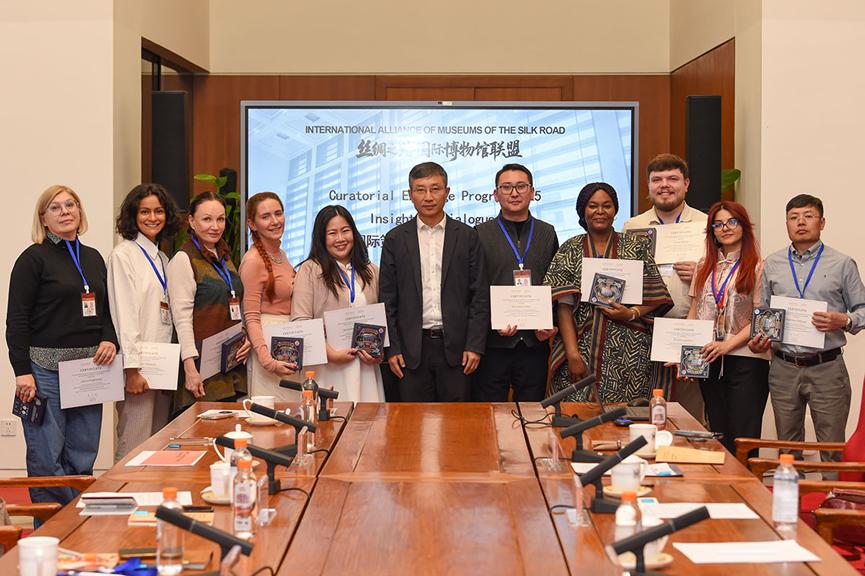The International Alliance of Museums of the Silk Road (IAMS) successfully held its inaugural Curatorial Exchange Program from October 17 to 26, 2025. Centered on the theme of "curation," the program brought together ten curators and researchers from ten member institutions across Azerbaijan, Belarus, Kazakhstan, Mongolia, Nigeria, Poland, Russia, Saudi Arabia and Thailand. Taking place in both Hangzhou and Beijing, the program featured symposiums, field studies, roundtable discussions and institutional visits designed to foster deeper professional dialogue within the global museum community.

In Hangzhou, participants attended the Third Liangzhu Forum and Fourth Conference of the IAMS. Representatives from Azerbaijan, Nigeria, Poland and other countries delivered presentations at the conference, sharing their practical experiences in heritage conservation and exhibition planning. The group also visited the China National Silk Museum, Zhejiang Provincial Museum and Liangzhu Museum, where, under expert guidance, they explored both innovative and well-established practices in the application of digital technology, collaborative curation, archaeological interpretation and public education.
In Beijing, the delegation engaged in in-depth discussions at the National Museum of China. Focusing on international collaboration, curation, conservation, and the application of technology and digital media, participants exchanged insights through cross-national curatorial case studies, explored new models of international cooperation, and learned about smart museum initiatives. They also visited several major exhibitions—Ancient China, The Digital World of Rhino-shaped Vessel, and Ilya Repin: Encyclopedia of Russian Life—and visited the Object Date Collecting Center and Conservation Studios. Visits to the Capital Museum and the Palace Museum further broadened participants' understanding of China's museums and development.
As the first personnel exchange program since the Alliance's founding, the program established an effective platform for professional dialogue and knowledge sharing, while encouraging mutual learning among young museum professionals from countries along the Silk Road. By emphasizing people-to-people connections, it strengthened trust and collaboration among member institutions and laid a solid foundation for future joint curation, digital cooperation and academic exchange.
Looking ahead, the IAMS aims to make such exchange programs a regular initiative, working closely with museums and cultural institutions worldwide to promote conservation, transmission and innovation of Silk Road cultural heritage—contributing lasting momentum to cultural exchange, mutual learning, and the high-quality development of the international museum sector.